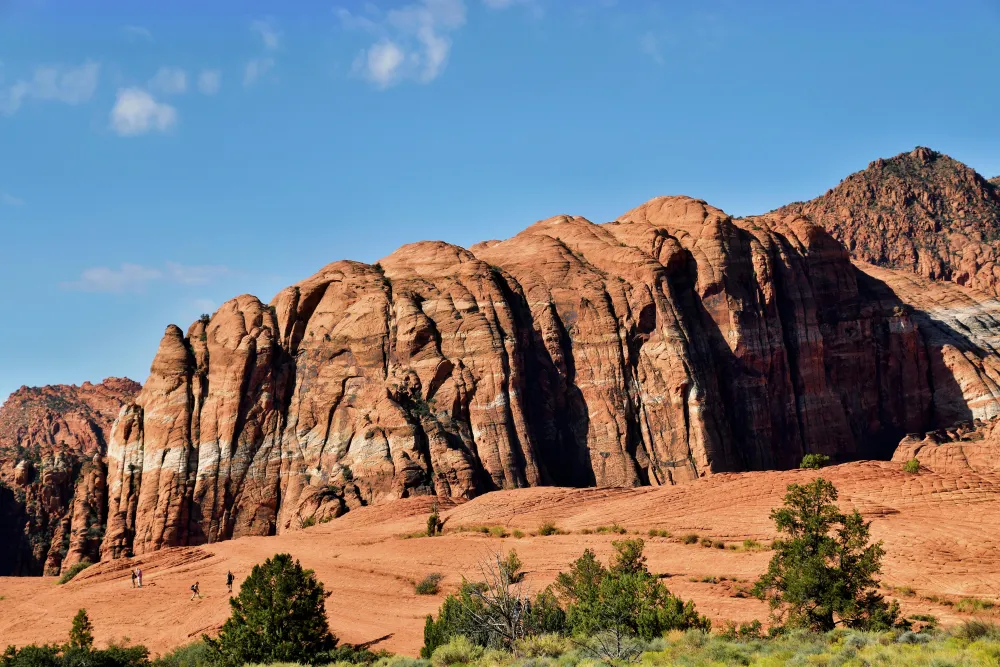5 U.S. State Parks That Rival National Parks in Beauty and Adventure
America’s natural landscapes are protected and celebrated through two distinct yet complementary systems: national parks and state parks. While national parks often grab the spotlight with their sweeping scale and iconic status—think Yellowstone or Yosemite—it’s in the state parks that many travelers find intimacy, access, and a deeper connection to place. These are the parks often passed down through memory, tied to local identity, and kept alive by the communities that surround them.
State parks exist because not every majestic canyon, ancient forest, or crystal spring fits within federal boundaries. Established and managed by individual states, these parks were created to preserve local ecosystems, protect cultural landmarks, and provide recreation close to home. And sometimes, they rival national parks in both grandeur and adventure.
Unlike their national cousins, state parks often feel more personal. Fewer tour buses, more chances to see sunrise alone. Campgrounds where rangers know your name. Trails where the silence isn't broken by a crowd’s chatter, but by birdsong or the crunch of pine needles underfoot. In these places, beauty doesn’t demand spectacle—it invites discovery.
Here are five such places where state parks step confidently into the national stage—no apologies, no comparisons needed. Just raw, unscripted nature, waiting for you.
1. State Forest State Park
Location: 56750 CO-14, Walden, CO 80480
Fun fact:
Known as the "Moose Viewing Capital of Colorado," the park is home to more than 600 moose — often seen right near campgrounds.
Important Information:
- Parking: Free with park admission; several trailhead lots
- Accessibility: Visitor center accessible; most trails are rugged
- Fee: $10 daily vehicle pass or Colorado State Parks Pass
- Hours: Open 24/7, year-round
- Best time to visit: June–September for wildlife and hiking
- Insider tip: Visit at dawn near the North Michigan Reservoir for your best chance at spotting a moose.
Tucked into the rugged northern Rockies of Colorado, State Forest State Park is often called the state’s best-kept wilderness secret. Spanning over 70,000 acres between Walden and the western slopes of Rocky Mountain National Park, this vast and varied park offers everything the adventurous soul might seek—without the packed parking lots and timed-entry headaches of its national neighbor.
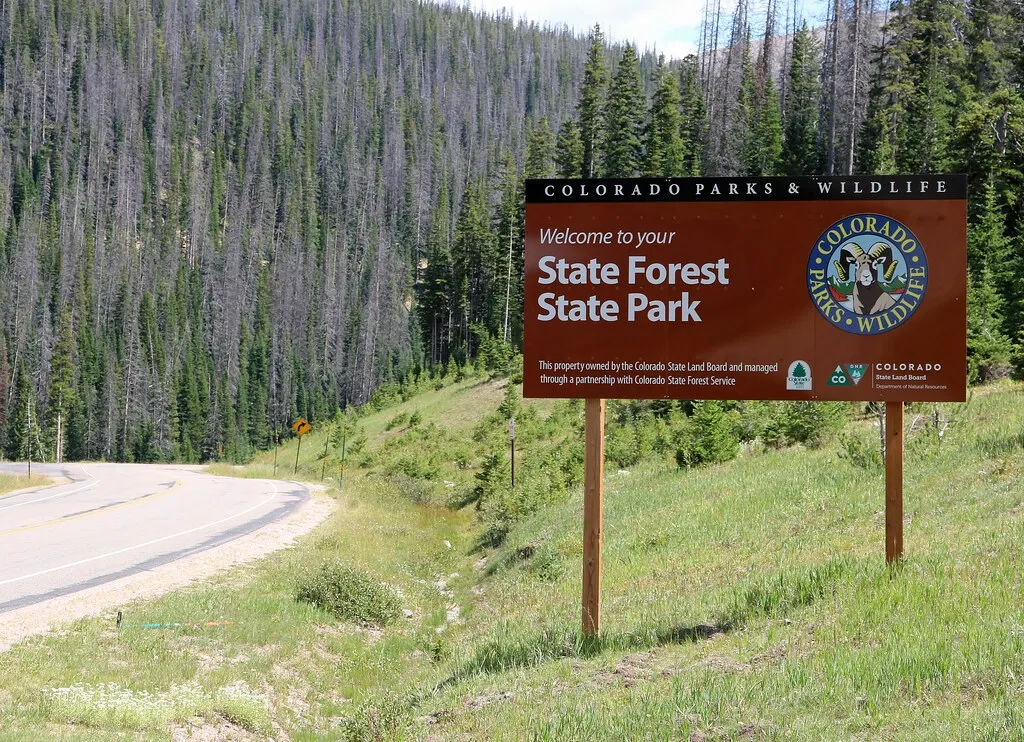
This park is often dubbed the Moose Viewing Capital of Colorado, with an estimated 600 moose roaming its valleys and meadows year-round. Yet its appeal goes far beyond wildlife. The landscape shifts from alpine lakes and flower-strewn meadows to jagged granite peaks and high-elevation trails. In summer, hikers can take on the North Diamond Peak Trail or the rugged route to Lake Agnes—each path offering panoramic views and the occasional moose encounter. Winter transforms the park into a haven for snowshoeing, cross-country skiing, and snowmobiling, with 50 miles of groomed trails.
Camping here feels deeply immersive. You’ll find backcountry sites, rustic cabins, and developed campgrounds, all with the kind of solitude that makes a fire’s crackle the loudest sound around. Rangers are friendly but not overbearing, and the park’s remoteness means stargazing here is sublime—sky stretched wide, untouched by city light.
In essence, State Forest State Park is where you go when you want the drama of Colorado wilderness without the crowds. It’s not just a substitute for a national park—it’s an experience entirely its own, shaped by scale, silence, and wild presence.
2. Snow Canyon State Park
Location: 1002 Snow Canyon Dr, Ivins, UT 84738
Fun fact:
Despite the name, Snow Canyon rarely sees snow — it’s named after early Mormon settlers Lorenzo and Erastus Snow.
Important Information:
- Parking: Multiple free lots within the park
- Accessibility: Paved overlooks and restrooms available
- Fee: $10 per vehicle (Utah resident); $15 (non-resident)
- Hours: 6am–10pm daily
- Best time to visit: October–April for cooler hiking weather
- Insider tip: Don’t miss the Petrified Dunes Trail — surreal sandstone swirls straight out of a sci-fi movie.
Just a short drive from the red-rock grandeur of Zion National Park, Snow Canyon State Park in southwestern Utah offers an equally stunning experience—but with fewer crowds, more flexibility, and a surprisingly diverse palette of terrain. Located near the town of Ivins in Washington County, this 7,400-acre park showcases a striking blend of ancient lava flows, Navajo sandstone cliffs, and wind-sculpted dunes that seem almost Martian in their otherworldliness.
Despite its name, Snow Canyon rarely sees snow. The name honors early Utah settlers Lorenzo and Erastus Snow, not winter storms. Instead, what you’ll find is a desert sanctuary defined by color and contrast—black lava spilling across red and white rock formations, narrow slot canyons perfect for exploration, and quiet trails that wind through fragrant sage and desert willow.
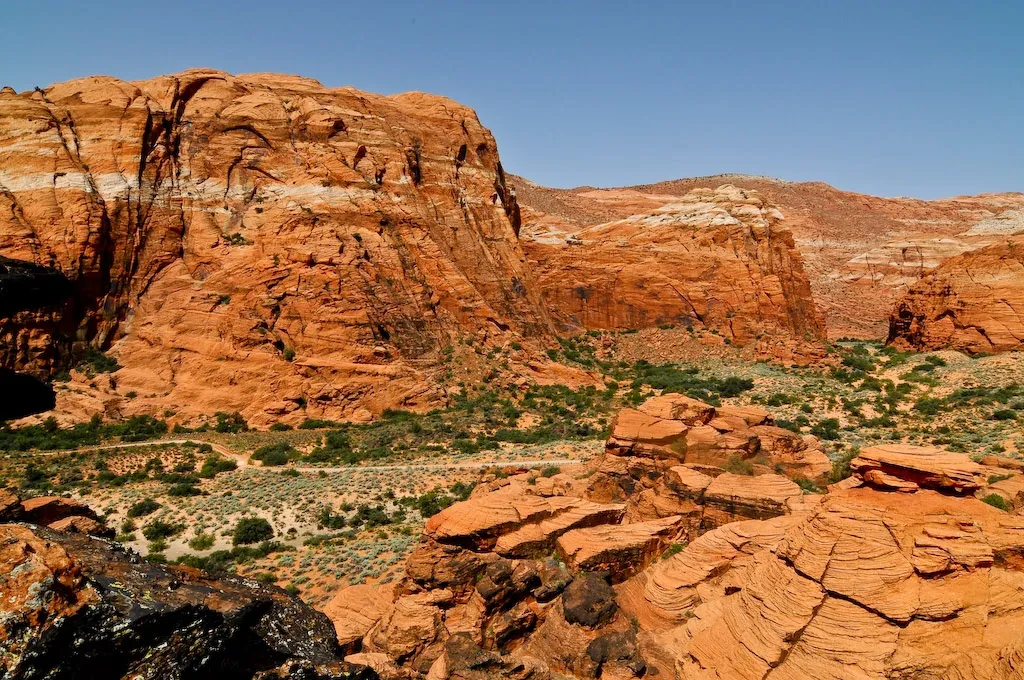
Popular hikes include the Petrified Dunes Trail, where waves of solidified sandstone roll underfoot like frozen surf, and the Johnson Canyon Trail, a seasonal path that leads to a towering arch and rare spring-fed stream. The park is also a favorite among climbers and cyclists, offering accessible routes that still challenge and inspire. At sunset, the landscape glows with an inner light, as if painted from memory.
Unlike the nearby national parks, Snow Canyon invites a slower, more personal exploration. There’s no need to race from overlook to overlook. Here, you can sit in silence under a rock ledge, feel the heat of the day melt into cool dusk, and listen to the wind echo stories through canyons that have seen thousands of years.
In Snow Canyon, beauty isn’t just seen—it’s felt. And that’s what makes it unforgettable.
3. DuPont State Recreational Forest
Location: 89 Buck Forest Rd, Cedar Mountain, NC 28718
Fun fact:
Several scenes from The Hunger Games and The Last of the Mohicans were filmed here — especially around Triple Falls.
Important Information:
- Parking: Free at multiple trailheads (Hooker Falls, High Falls)
- Accessibility: Visitor areas accessible; some flat trails available
- Fee: Free admission
- Hours: 5am–10pm daily
- Best time to visit: Fall for waterfalls and colorful foliage
- Insider tip: Pack a picnic — there are scenic creekside spots and covered shelters along the trails.
Deep in the Blue Ridge Mountains of western North Carolina, DuPont State Recreational Forest unfolds like a lush, cinematic dream. Covering more than 12,500 acres between Brevard and Hendersonville, this state-managed treasure is best known for its stunning waterfalls, moss-laced trails, and a serene sense of seclusion that makes every visit feel like a personal discovery.
Originally a mix of private land and conservation easements—including acreage donated by the DuPont corporation—the forest became public in the late 1990s after grassroots efforts ensured its preservation. It has since become one of North Carolina’s most cherished outdoor escapes, not only for its recreational offerings but also for the story it tells about the power of local stewardship.
Its most iconic features are the trio of dramatic waterfalls—Triple Falls, High Falls, and Hooker Falls—each easily accessible yet immersive in beauty. These waterfalls tumble over wide stone ledges and plunge into pools that shimmer beneath canopies of hardwood and rhododendron. Their cinematic appeal is no coincidence: the forest provided backdrops for scenes in films like The Hunger Games and The Last of the Mohicans, placing it firmly in the collective imagination.
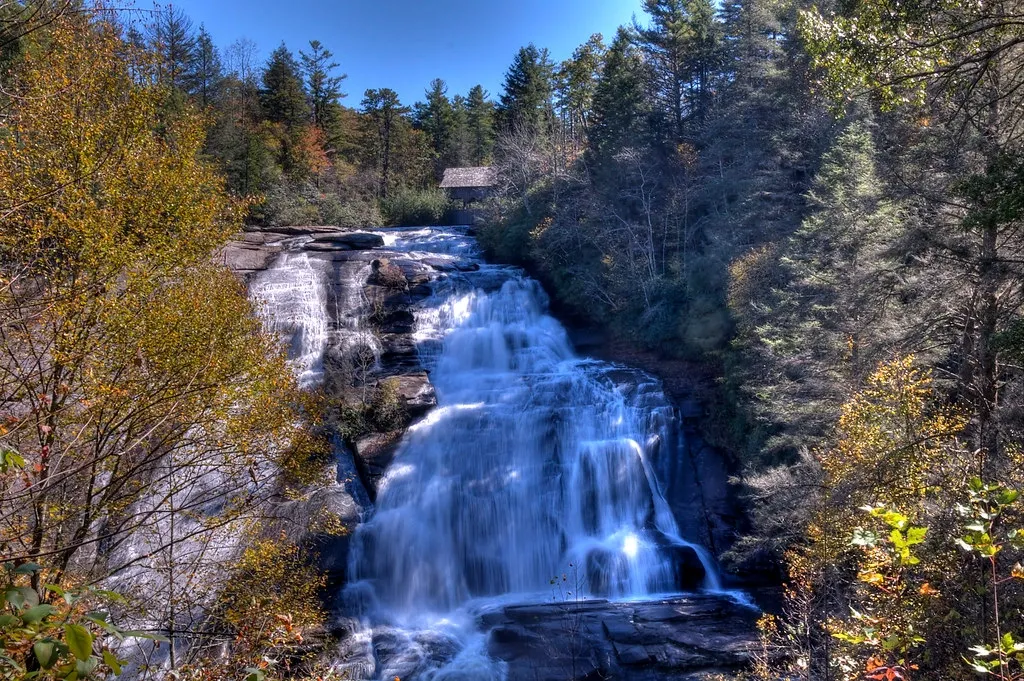
Beyond the falls, DuPont’s trail network stretches for over 80 miles, welcoming hikers, mountain bikers, and horseback riders. Trails weave past quiet lakes, granite domes like Cedar Rock, and shaded forests teeming with wildlife. One moment you’re atop a sun-drenched ridge, the next you’re stepping softly through fern-lined corridors that hum with birdsong and summer breeze.
What sets DuPont apart is its accessibility—visitors of all ages and skill levels can enjoy its offerings without the logistical hurdles often found in national parks. And yet, the rewards feel just as epic.
DuPont is not about spectacle—it’s about immersion. It invites you to slow down, step off the paved path, and lose yourself in the quiet, watery world of the southern Appalachians.
4. Hot Springs State Park
Location: 220 Park St, Thermopolis, WY 82443
Fun fact:
The park features the world’s largest mineral hot spring — naturally heated and open for free soaking.
Important Information:
- Parking: Free lots near bathhouse and trailheads
- Accessibility: Fully accessible bathhouse and walkways
- Fee: Free admission and hot spring use
- Hours: Daily, 8am–5:30pm (bathhouse); park open year-round
- Best time to visit: Winter — surreal steam rises from the springs in the cold air
- Insider tip: Walk the suspension bridge over the Bighorn River for amazing views and a geothermal mist experience.
Deep in the Blue Ridge Mountains of western North Carolina, DuPont State Recreational Forest unfolds like a lush, cinematic dream. Covering more than 12,500 acres between Brevard and Hendersonville, this state-managed treasure is best known for its stunning waterfalls, moss-laced trails, and a serene sense of seclusion that makes every visit feel like a personal discovery.
Originally a mix of private land and conservation easements—including acreage donated by the DuPont corporation—the forest became public in the late 1990s after grassroots efforts ensured its preservation. It has since become one of North Carolina’s most cherished outdoor escapes, not only for its recreational offerings but also for the story it tells about the power of local stewardship.
Its most iconic features are the trio of dramatic waterfalls—Triple Falls, High Falls, and Hooker Falls—each easily accessible yet immersive in beauty. These waterfalls tumble over wide stone ledges and plunge into pools that shimmer beneath canopies of hardwood and rhododendron. Their cinematic appeal is no coincidence: the forest provided backdrops for scenes in films like The Hunger Games and The Last of the Mohicans, placing it firmly in the collective imagination.
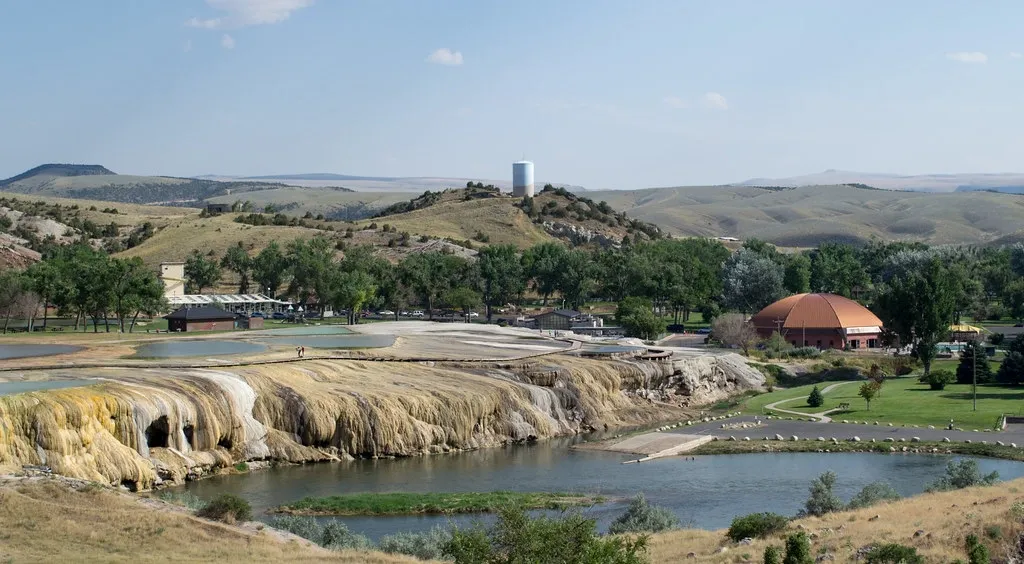
Beyond the falls, DuPont’s trail network stretches for over 80 miles, welcoming hikers, mountain bikers, and horseback riders. Trails weave past quiet lakes, granite domes like Cedar Rock, and shaded forests teeming with wildlife. One moment you’re atop a sun-drenched ridge, the next you’re stepping softly through fern-lined corridors that hum with birdsong and summer breeze.
What sets DuPont apart is its accessibility—visitors of all ages and skill levels can enjoy its offerings without the logistical hurdles often found in national parks. And yet, the rewards feel just as epic.
DuPont is not about spectacle—it’s about immersion. It invites you to slow down, step off the paved path, and lose yourself in the quiet, watery world of the southern Appalachians.
5. Jonathan Dickinson State Park
Location: 16450 SE Federal Hwy, Hobe Sound, FL 33455
Fun fact:
The park is named after a Quaker merchant whose shipwreck survival in 1696 became one of Florida’s earliest adventure tales.
Important Information:
- Parking: Free with entry; ample lots at campgrounds and trailheads
- Accessibility: Visitor center and paved trails available
- Fee: $6 per vehicle
- Hours: 8am–sunset, 365 days a year
- Best time to visit: November–April for cool, dry weather and fewer bugs
- Insider tip: Rent a kayak and paddle the Loxahatchee River — one of only two federally designated Wild & Scenic Rivers in Florida.
On Florida’s southeastern coast, where the Atlantic breeze mingles with the scent of pine and salt, Jonathan Dickinson State Park unfolds as a rich mosaic of ecosystems and history. Located just north of Jupiter in Hobe Sound, this is the largest state park in Southeast Florida, covering more than 11,500 acres of sand pine scrub, mangroves, river swamps, and coastal prairie. Here, adventure isn’t found in towering peaks or plunging waterfalls—it’s discovered in quiet resilience, diverse wildlife, and the layered stories of people and land.
Named after a Quaker merchant shipwrecked nearby in 1696, the park bears the memory of his harrowing journey through what was then a wild, untamed land. But history didn’t stop there. During World War II, the area was transformed into Camp Murphy, a top-secret radar training facility whose ruins still rest among the palms and pines, offering an unexpected historical twist to the park’s natural appeal.
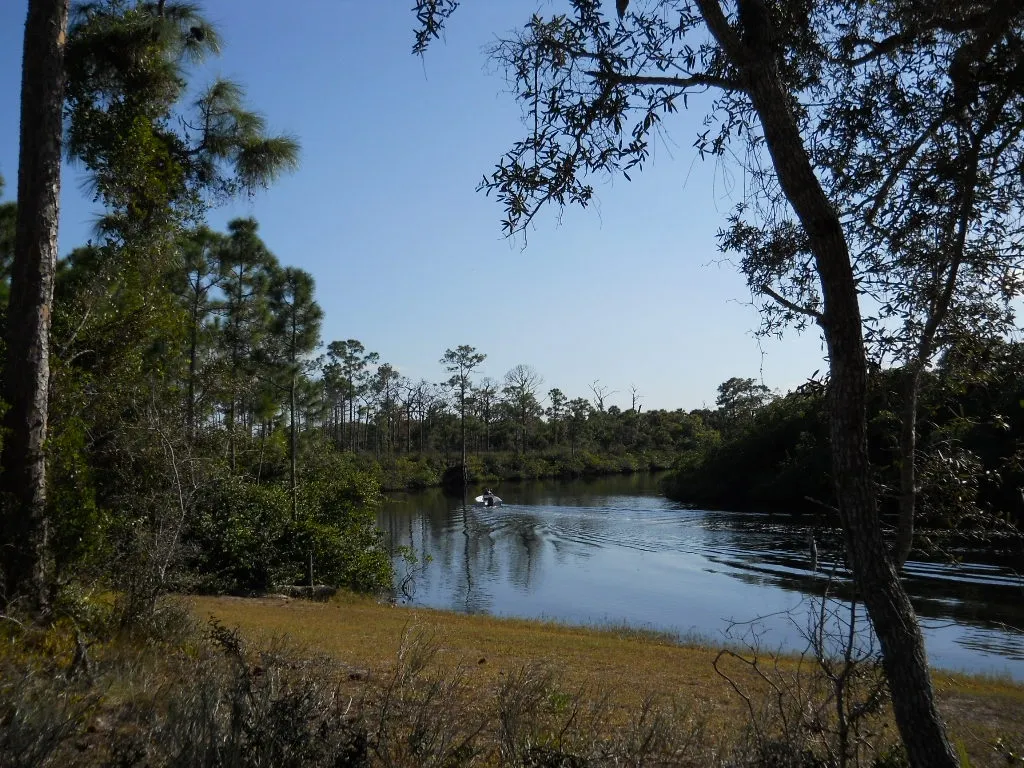
Today, the Loxahatchee River, one of Florida’s two federally designated Wild and Scenic Rivers, winds through the heart of the park. Paddlers and kayakers glide past alligators, turtles, and osprey along its tannin-stained waters, while hikers and cyclists explore miles of trails that pass through rare coastal sand hills and shaded hammocks.
Climb the 1930s observation tower for panoramic views that stretch from river bend to ocean horizon, or explore the Kitching Creek Trail for a quieter journey into Florida’s ecological soul. Families enjoy ranger-led boat tours, while wildlife watchers are rewarded with glimpses of deer, bobcats, and countless bird species that call the park home.
Jonathan Dickinson State Park is a living archive of Florida’s natural and cultural story—a reminder that wildness can thrive even near busy highways and fast-growing suburbs. It invites not just recreation, but reflection, offering travelers a chance to see what Florida looked like before the neon and noise. It's proof that adventure can be as much about presence as it is about peaks.
Conclusion
The beauty of America’s wilderness doesn’t belong solely to its national parks. In the quiet corners of state-managed lands, a different kind of majesty emerges—one that’s intimate, accessible, and deeply rooted in local pride. These five parks—Colorado’s alpine solitude, Utah’s glowing canyons, North Carolina’s waterfall-laced forests, Wyoming’s healing waters, and Florida’s river-woven wilds—remind us that adventure doesn’t have to be measured by fame.
State parks are where nature meets people with fewer barriers. They’re shaped not only by geology, but by the communities that fight to protect them, the families who grow up camping in them, and the travelers who find something unexpectedly profound beneath their canopies or beside their streams. They give us space not just to visit, but to belong.
So the next time you plan a getaway, look beyond the headline names. You may just find your most meaningful moments waiting in a place that doesn’t ask for attention—but gives you everything in return.
Comparison Chart
| Aspect | Jonathan Dickinson State Park (FL) | Hot Springs State Park (WY) | DuPont State Recreational Forest (NC) | Snow Canyon State Park (UT) | State Forest State Park (CO) |
|---|---|---|---|---|---|
| Established / Size | 1950 – ~11,500 acres | Early 20th century | 1997 – ~12,500 acres | 1954 – ~7,400 acres | 1979 – ~71,000 acres |
| Entry Cost | Standard park fee; cabins extra | ~$7/day per vehicle; camping extra | Free entry | $10/day vehicle; ~$100 annual pass | ~$10/day vehicle; camping/cabins extra |
| Pets Allowed | Yes, on leash (not in cabins/swimming areas) | Yes, on leash (not in bathhouse) | Yes, on leash | Yes, but restricted to certain trails/campgrounds | Yes, on leash |
| Waterfall | No | No | Yes—High Falls, Hooker Falls, Triple Falls, Bridal Veil Falls | No | No major waterfalls |
| Suitable for Families | Yes—canoeing, biking, cabins, educational center | Yes—bathhouse, pools, easy trails | Yes—family-friendly hikes & waterfalls | Yes—scenic trails and overlooks | Yes—wildlife, camping, fishing, hiking |
| Open Year-Round | Yes | Yes | Yes (5 AM–10 PM) | Yes | Yes |
| Notable Landmark | Loxahatchee River, Trapper Nelson homestead | Mineral terraces, historic bathhouse | Multiple waterfalls, featured in films | Sandstone cliffs, lava flows, dunes | Moose-viewing capital of Colorado |
| Reservation Process | Cabins/campsites via state system; day-use at gate | No reservations needed for bathhouse; shelters/campsites available | No reservations for day-use; permits for events | Campsites require advance reservation; day-use at gate | Campsites, yurts, cabins via Colorado Parks reservation system |
State Park Vs National Park
| Aspect | State Parks | National Parks |
|---|---|---|
| Ownership & Management | Owned and operated by individual state governments through their state park agencies. | Owned and managed by the federal government through the National Park Service (NPS). |
| Size | Generally smaller, often 100–10,000 acres, though some are larger. | Much larger, ranging from tens of thousands to millions of acres. |
| Focus | Often preserve local or regional natural areas, cultural sites, or recreational spots. | Protect nationally significant natural, cultural, or historic treasures. |
| Funding | Primarily from state budgets, entrance fees, and concessions. | Funded by the federal government, entrance fees, and nationwide programs. |
| Accessibility | More numerous (over 10,000 in the U.S.), often closer to towns and cities. | Fewer (63 designated “National Parks” and ~400 NPS sites total), often more remote. |
| Cost | Entrance fees usually lower ($5–$15 per vehicle or person). | Entrance fees often higher ($20–$35 per vehicle, valid for 7 days). |
| Recreation | Camping, hiking, boating, fishing, and regional events are common. | Backcountry hiking, large-scale wildlife viewing, scenic drives, and extensive camping. |
| Conservation Role | Protects natural beauty and provides recreation within the state’s priorities. | Strict conservation mandate to protect ecosystems, landscapes, and cultural heritage for the entire nation. |
| Examples | Niagara Falls State Park (NY), Red Rock Canyon State Park (CA), Custer State Park (SD). | Yellowstone, Grand Canyon, Yosemite, Everglades. |
| Governance Laws | Managed under state legislation; rules vary widely between states. | Managed under federal law (Organic Act of 1916 and related legislation). |


